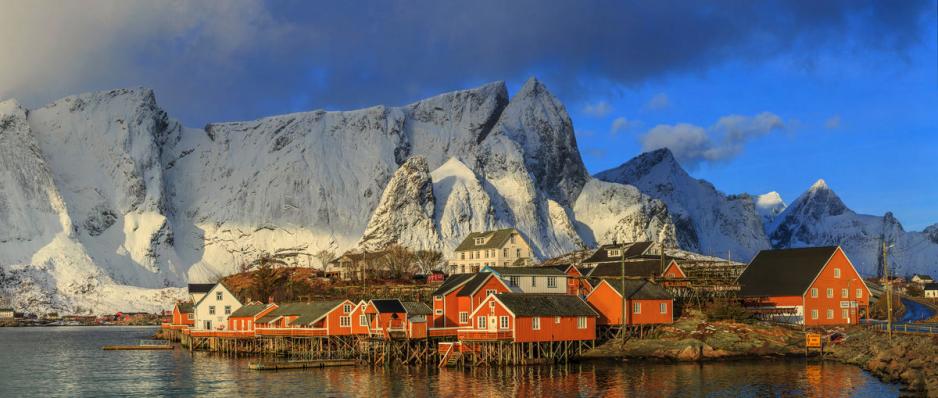Op-ed: The Paradox of The Blue Economy

Alaska and North Norway share similar characteristics, particularly regarding the regions' economic dependence on maritime industries and their potential for blue economy development. (Photo: AlaskaNor)
The Blue Economy offers enormous opportunities for growth. However, significant challenges can occur along the way, such as labor shortage, gender inequality, and issues about the attractiveness of the Blue Economy jobs for new generations. This creates a paradox – great potential in talks and plans versus difficulties in practice.
This is a opinion article, written by an external contributor. The article expresses the writer's opinions. High North News is not responsible for the content in external links.
What is a Blue Economy? In short, the Blue Economy embraces all ocean-related industries, including shipping, fishing, offshore wind, ocean energy, tourism, marine biotechnology, but also the natural assets and ecosystem services that the ocean provides.
Conceptually, the Blue Economy goes beyond “business as usual” and implies utilizing ocean resources in sustainable ways for the benefit of local communities and society in general.
Recently, the Blue Economy has become one of the most promising spheres of the global economy. This interest has only increased in light of the latest developments. In the High North, the melting of ice potentially creates more opportunities for growth – for example, in logistics and mineral production.
Innovative technologies are emerging and soon will allow us to extract new fields in the sea many miles underwater and long offshore. Blue biotechnology is blooming, promising humankind medicine of the future, as well as new sources of protein derived from seaweed and other ocean spices.
The world ocean has truly become the ocean of opportunities attracting the close attention of investors, and national and sub-national structures.
Who will harvest the blue opportunities in practice?
According to the estimates of the Organisation for Economic Co-operation and Development, ocean-based industries could double their contribution to the global economy by 2030. In Norway, almost 70% of export revenues come from sea-related economic activities and resources. A respective growth in blue industries will influence the national economy significantly.
However, on the practical level, there are many obstacles on the way to blue prosperity, and among them is the big question – who will harvest the blue opportunities in practice?
Labor Shortage
The Blue Economy encompasses many industries that are naturally located in coastal areas and small communities along the shore. This includes fisheries, aquaculture, ocean energy, and mineral production. In Europe, almost everywhere, such communities experience outmigration, and respective industries are struggling with labor shortages.
In Northern Norway, depopulation decline is especially dramatic in the age group between 20-35. The trend is shared by other Nordic countries. However, this is a challenge not only for the North – the South of Europe is experiencing similar difficulties – outmigration and labor shortage in coastal communities.
Gender inequality does not help
Traditionally, many areas of the Blue Economy have been male-dominated, as they were associated with heavy physical work, long shifts away from families, and harsh working conditions.
However, the technologies have developed a lot since that time, leading to more technologically advanced working places where technical competence is required rather than physical activities. Also, social circumstances have changed and now provide work schedules allowing for a better balance between work and family.
Also read (the article continues)
Still, the gender inequality in Blue Industries is substantial, reaching 80-85% in particular areas in favor of men. This gap leads to many potentially competent and skilled female specialists being lost for the Blue Economy and its areas like sustainable aquaculture, renewable energy, blue carbon, and marine bio-prospection - exactly where they are very much needed.
Therefore, the important question is – what can we do to promote Blue economy professions and industries for female specialists?
Gen Z appreciates flexibility
Young people are our future, and they are also our present. The outmigration of young people is a frightening trend in Northern Norway, and beyond – in the whole of Europe young people tend to move to big cities, attracted by the urban vibe. But do we know much about their motivations?
The generation born between 1997-2012 is often referred to as the Z generation. These young people are now aged 11-26 years old – current and future students and young specialists. Gen Z are digital natives who appreciate virtual reality: roughly 46% of teens now say they are online on a near-constant basis.
Entering the job market, Gen Z searches for better work-life balance and more flexibility, expecting hybrid and online work options. Naturally, Gen Z looks at such jobs as bloggers, influencers, and digital experts; and they do show a preference for urban lifestyles due to opportunities for education, jobs, culture, and diversity.
Generation Z does not dream of climbing the corporate ladder but following their goals and ambitions, whether that means building a personal brand or finding a job that works best for their lifestyle, easily quitting jobs that do not meet their expectations. The opportunities market in small coastal communities does not always provide such options.
The paradox of the Blue Economy
Mankind is looking into the deep ocean waters with hope and interest. Great opportunities are ahead to potentially provide what the world needs extremely – clean energy, nutrition, desalinated water, and new medicine.
Still, the Blue Economy needs skilled, competent people to harvest these opportunities, and the future does not look bright until the obstacles are addressed.




